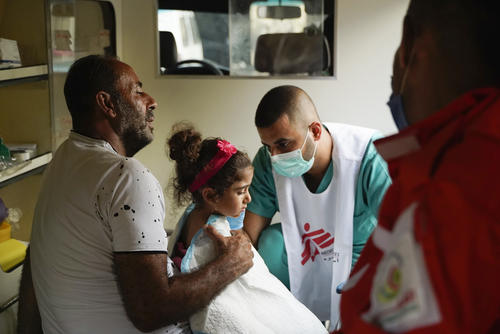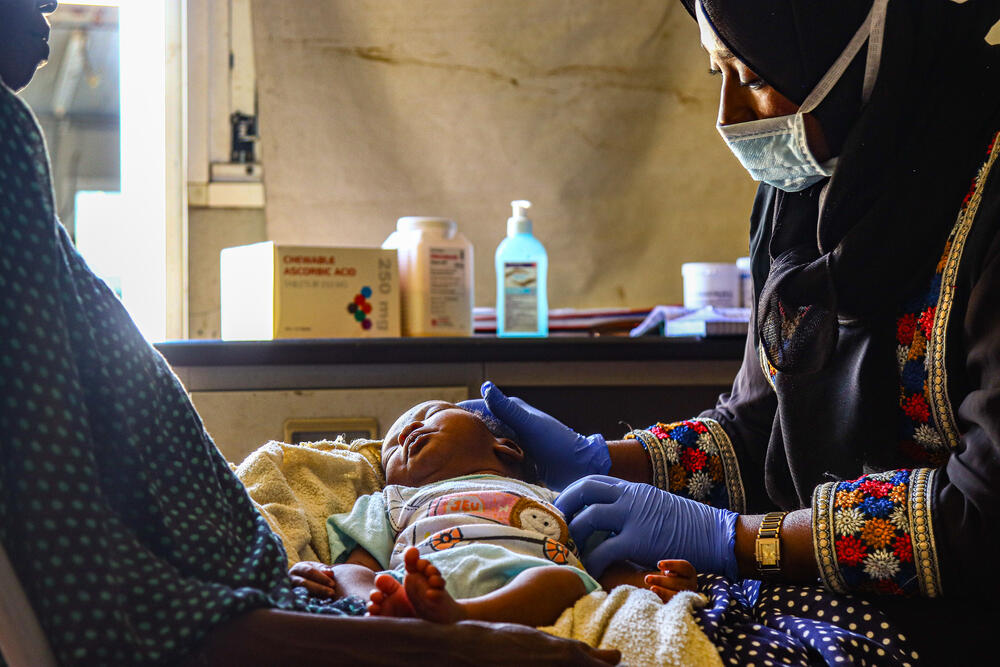Live Aid at 40: Where's the outrage now?
Forty years ago the sight of severely malnourished children caused international outrage. 'What’s different now?' asks MSF paediatric advisor Dr Neal Russell…
“I remember the famine in Darfur in 1985”, the Sudanese nurse says to me. “I remember being six years old, seeing the tears in my little sister’s eyes when we ran out to the helicopter as it dropped food from the sky.”
“I remember 1985,” the American doctor says to me, “being eight years old, singing ‘We are the World’, in our classroom to raise money for famine relief.”
“We remember 1985,” my mum and dad say to me, “watching David Bowie, and the video of starving children on Live Aid when you were a baby in our arms.”
Undeniable
2025 is the fortieth anniversary of Live Aid. There’s much that can be said about it. Médecins Sans Frontières / Doctors Without Borders (MSF) called out the misuse of Live Aid funds in Ethiopia at the time, and the event perpetuated stigmatising narratives of victimhood and white saviourism.
But what cannot be denied is the widespread sense of outrage and concern for human beings dying unnecessarily. Some viewers were so shocked at the sight of severely malnourished children that they donated their wedding rings to famine relief.
‘Reagan Sorghum’ is what people in the Sudanese region of Darfur called the flour they received during that famine, named after the president of the USA at the time, where most of the assistance came from.
You can still ask for ‘Reagan Sorghum’ in the markets in Darfur, descended from the seeds that fell from those helicopters.
“Saving lives is being dismissed by governments as a ‘soft power’ tool which has gone out of fashion”
Medical care where it's needed most
Help us care for people caught in the world's worst healthcare crises.

A new normal
Now, in 2025, with famine officially declared again in the midst of the war in Sudan, whatever seeds of international solidarity were sown in the past appear to have withered. The most notable deliveries to arrive in Darfur at the start of this year were USAID letters telling humanitarian agencies to stop their activities.
I met aid workers there who told me that as a result they were abruptly stopping life-saving treatment for malnourished children, or suspending their plans.
Some of those activities were subsequently restarted, but the direction of travel is clear: expectations have been reset. A new normal has taken hold, where deaths that could have been prevented are now accepted.
The history
1985 was a pivotal moment for famine relief. There were many problems with the famine assistance in Sudan at the time. Amongst the most serious criticisms was the delayed recognition and response by the government and international community. Many deaths were prevented by the food assistance which came, but still around 100,000 people, mostly children, died unnecessarily in Darfur alone.
As a result, famine early warning systems such as FEWS Net were set up to drive a more rapid response, and an international consensus was built that famine deaths can and should be prevented.
Over the following 40 years, mortality from famine has seen a historic low, which even humanitarianism’s most prominent scholarly critics agree is in no small part related to increases in humanitarian aid. It was even suggested, as recently as 2018, that through international action famine may have finally been conquered.
Famine is back
But famine is back. International humanitarian and food assistance to Darfur has been grossly insufficient since the start of the current war.
There are multiple reasons: the security situation; the destruction of World Food Program warehouses; bureaucratic and political barriers that impede the flow of aid across borders and frontlines.
However, this year, funding is also a primary concern. With governments cutting aid budgets, the UN’s Humanitarian Response Plan for Sudan was only 14 percent funded by the end of June. This despite analysis showing the situation worsening, with at least 638,000 people now facing catastrophic levels of hunger.
2025
I see another starving child on his mother’s lap in Nyala, South Darfur. He looks sad. Why is it him, in particular, that must suffer this collective failure? His mother is exhausted, but determined to get nutrition treatment for her son.
The coloured measuring band slides over his loose-fitting skin. He struggles to voice his objection to whatever is happening. Gently the band is adjusted to indicate his nutritional status. Red again: severely malnourished.
The third child like this in the last five minutes. It’s not even the hunger gap yet, the time of year when fresh food supply is at its lowest. This is not normal. This is an emergency. This is what humanitarian aid is for. When local systems are overwhelmed.
“As MSF we know that it is entirely unnecessary for children to die of starvation and disease outbreaks”
Bearing witness
However, at this moment when rapid and massive humanitarian scale up is urgently required, aid cuts risk suffocating the response.
In 1985, arguments centred around how humanitarian aid could be delivered more effectively, and how more lives could be saved with early intervention.
In 2025, governments like the US have been fighting court cases in order to withhold foreign aid. What remains of the humanitarian imperative? The right to life? Saving lives is being dismissed by governments as a ‘soft power’ tool which has gone out of fashion.
As humanitarian programmes reliant on government funding close, it is not the politicians making those cruel calculations who will bear witness to the suffering, the death, the human bodies and faces impacted by their far-away choices.
It will be the families on the ground who will remember, and the teams from the shrinking number of organisations who have stayed throughout the crisis.
Perhaps the most tragic and unforgiveable misunderstanding that is being communicated in the reporting of the 40th anniversary of Live Aid has been the idea that famine is an ‘impossible problem’. It is not.
We have learnt a lot since Live Aid, and as MSF we know that it is entirely unnecessary for children to die of starvation and disease outbreaks. Independent from governments and funded by private individuals giving what they can, we will continue, and we will attempt to scale up our support. However, we will not be able to meet the vast needs alone.
“I remember 2025”, many will say. The question remains what story will be told…
MSF and the crisis in Sudan
The violence between the Sudanese Armed Forces (SAF) and the Rapid Support Forces (RSF) has trapped millions of people in the middle of an unexpected conflict. Sudan now has the world's largest displacement crisis, with millions forced to flee their homes, while access to essential services such as healthcare has become increasingly difficult.
Médecins Sans Frontières / Doctors Without Borders (MSF) teams already working in Sudan have been responding to the crisis since its first moments.



